In-depth written conversations about music, mysticism, philosophy, history and more. Fourteen articles over sixty-four pages, featuring original artwork. The first five hundred copies are numbered and include a poster.


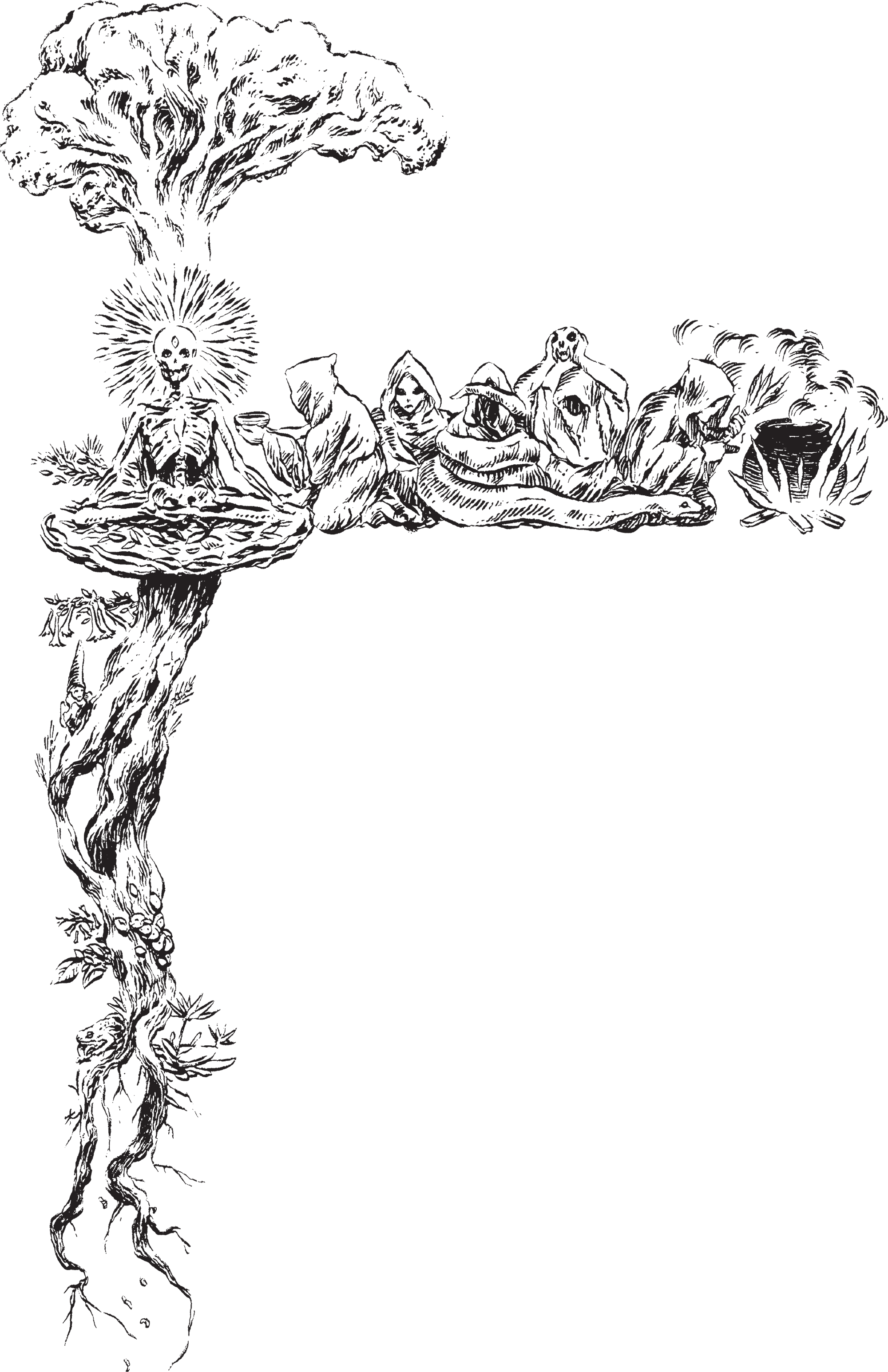

In-depth written conversations about music, mysticism, philosophy, history and more. Fourteen articles over sixty-four pages, featuring original artwork. The first five hundred copies are numbered and include a poster.
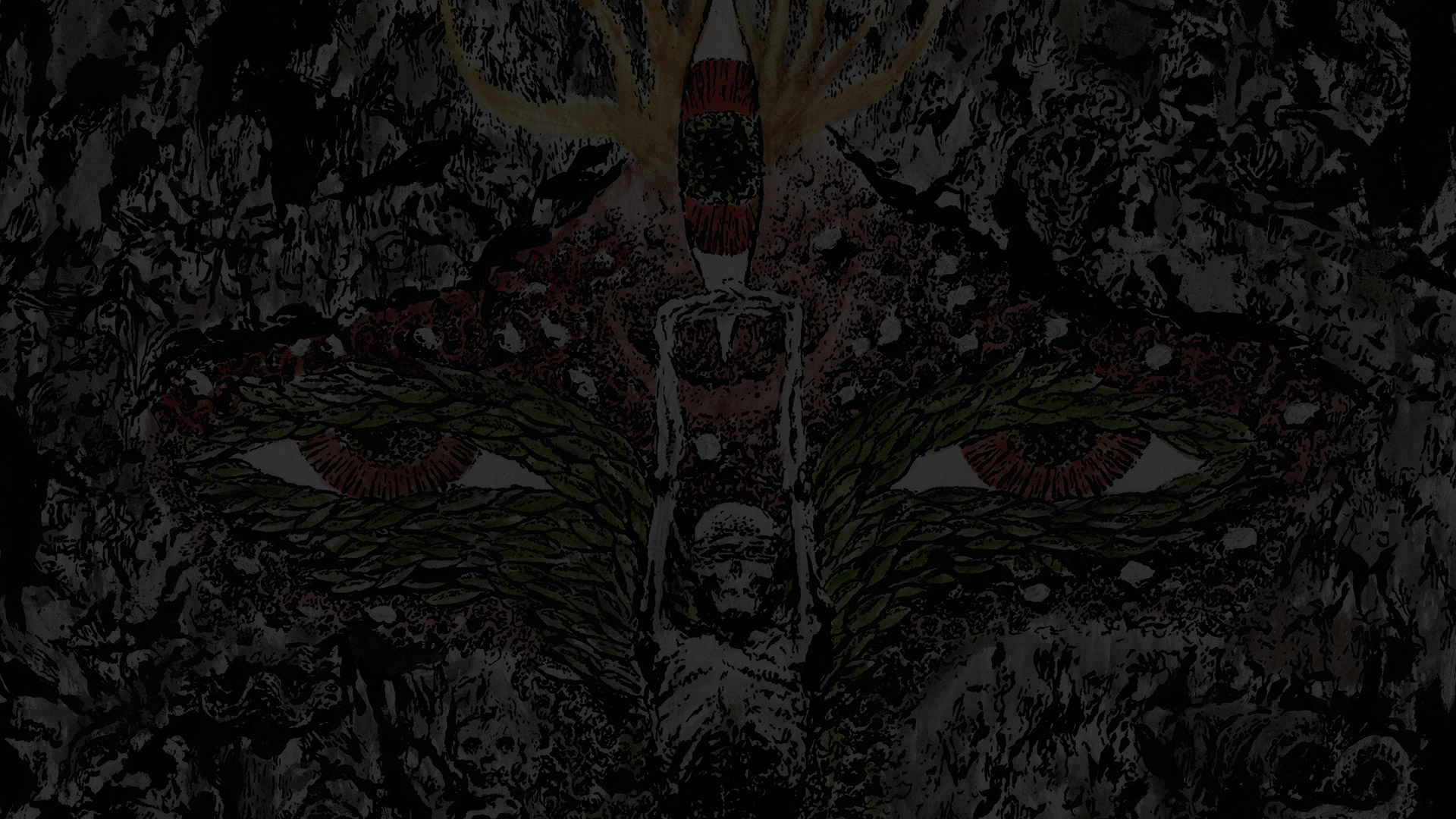


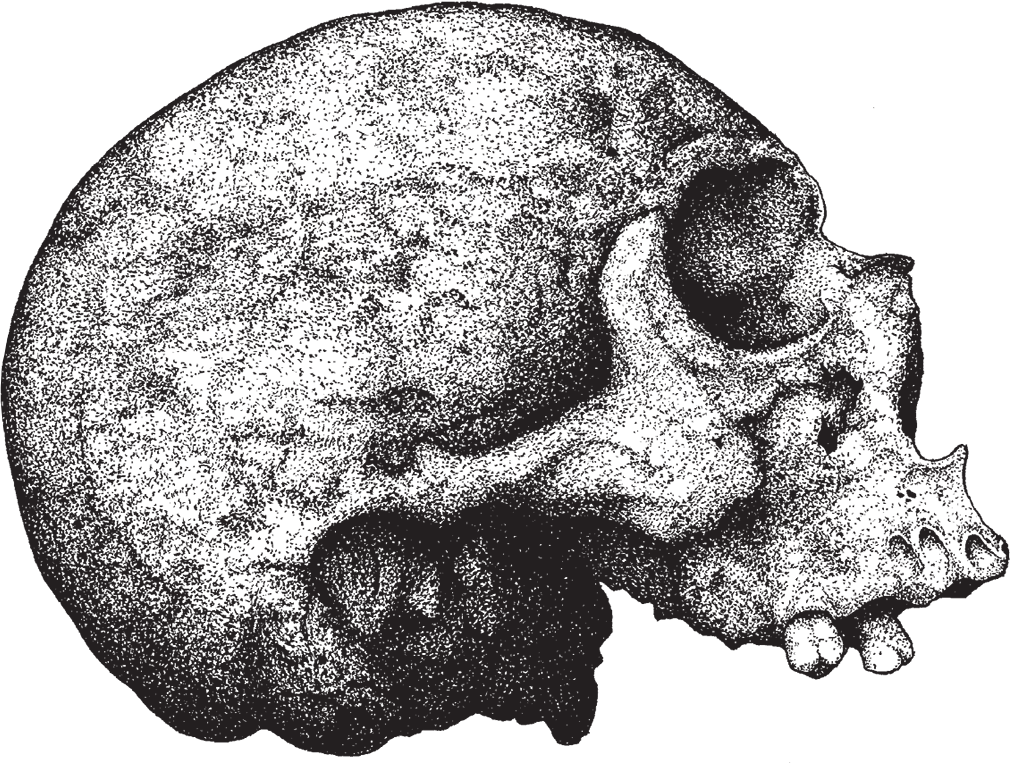
To be honest, I’m still not entirely sure how this happened. When the website launched on March 20, 2016, the notion of printing something had never even occurred to me. My internet presence was mostly intended as a writing portfolio to use as reference for freelance work. Alas, after publishing the irkallian oracle interview in May I was afflicted by a temporary severance from rational sanity and in an elated moment of creative inspiration vowed that come hellfire or Biblical floods, I would publish at least one article per week until the site had been online for a full year. I have since given myself and others numerous reasons to lament this folly, but a promise made to oneself should never be broken. At some point, suggestions that I compile selected works in printed form had begun taking root and so here we are.
– N.G.
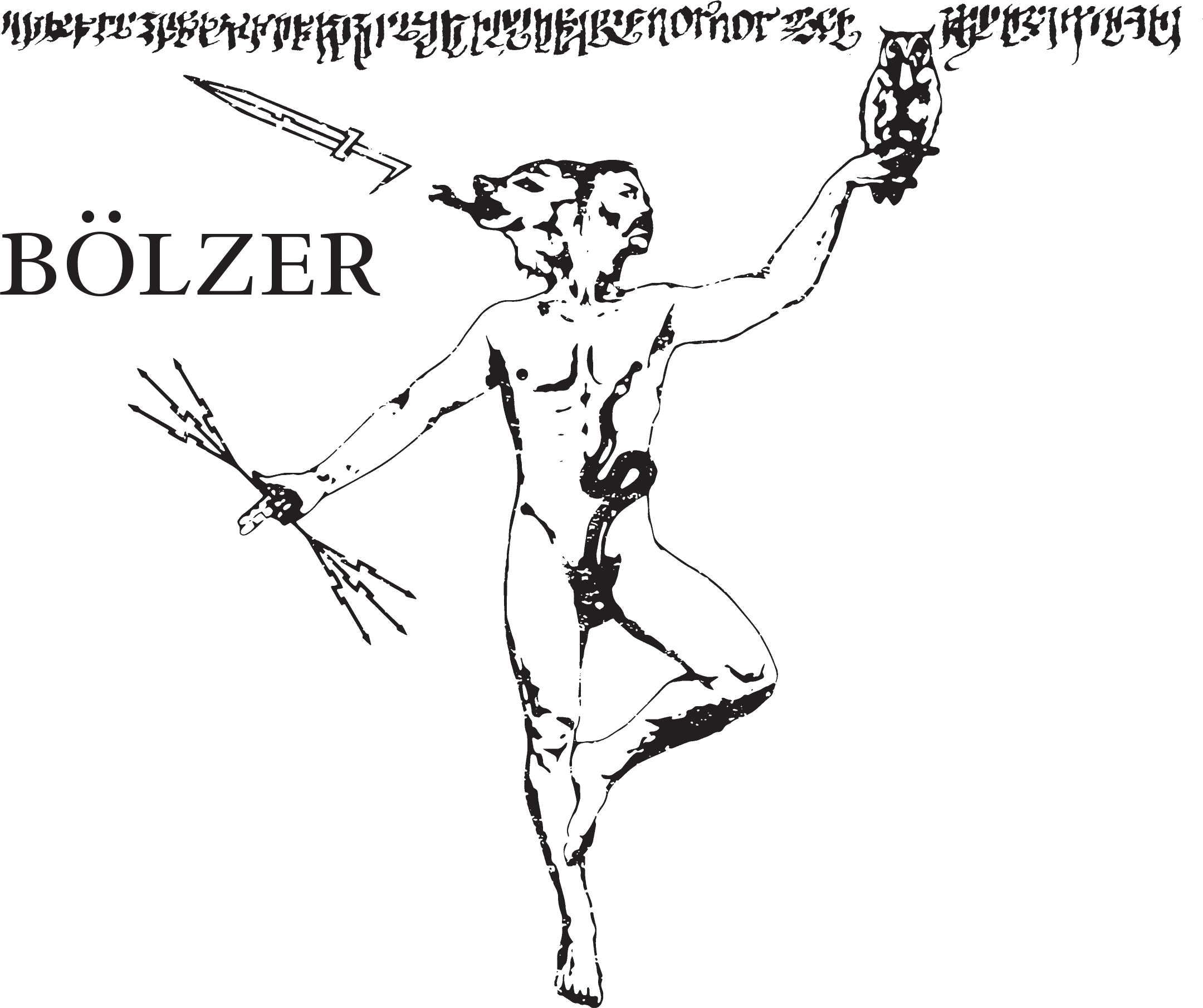
gazing stoically upon the falling scythe, and as its shadow grows, bölzer call upon the heroic. with instrumentation guided by divine enticement; hear songs of harvest in times of burning fields, a soil cultivated by fires of rekindling.
October 29, approximately 03:30am; Okoi 'KzR' Jones tracks me down at the Black Harvest after-party. A few hours prior, bölzer made their second appearance on Swedish soil – sharing stage with the likes of nifelheim, deströyer 666, unpure, angelcorpse, irkallian oracle, vomitor, saturnalia temple and root. He announces that the interview we had originally scheduled for the following day must instead take place at once. Having been stricken by a sudden wave of cerebral inspiration, the guitar player and vocalist demands to embark upon our conversational foray without further delay.
– bölzer is a completely intuitive and passion-based art project, Okoi explains excitedly, it’s my emotions which have been constructed and formed into songs – a raw and primal release of expression. That’s what I feel when I perform, this atavism. I’m inspired by humanity’s simple heartbeat, the pulse of nature. Despite being courted by significantly bigger labels, they opted to assign their debut album to German underground stalwarts Iron Bonehead Productions, in what is likely to be IBP’s biggest release to date. [...]
rok,
vocalist of australian
underground metal legends sadistik exekution, gives
a retrospective analysis of the band’s turbulent history. he explains why they
never became a commercial success, and how that is in fact a good thing for everyone involved


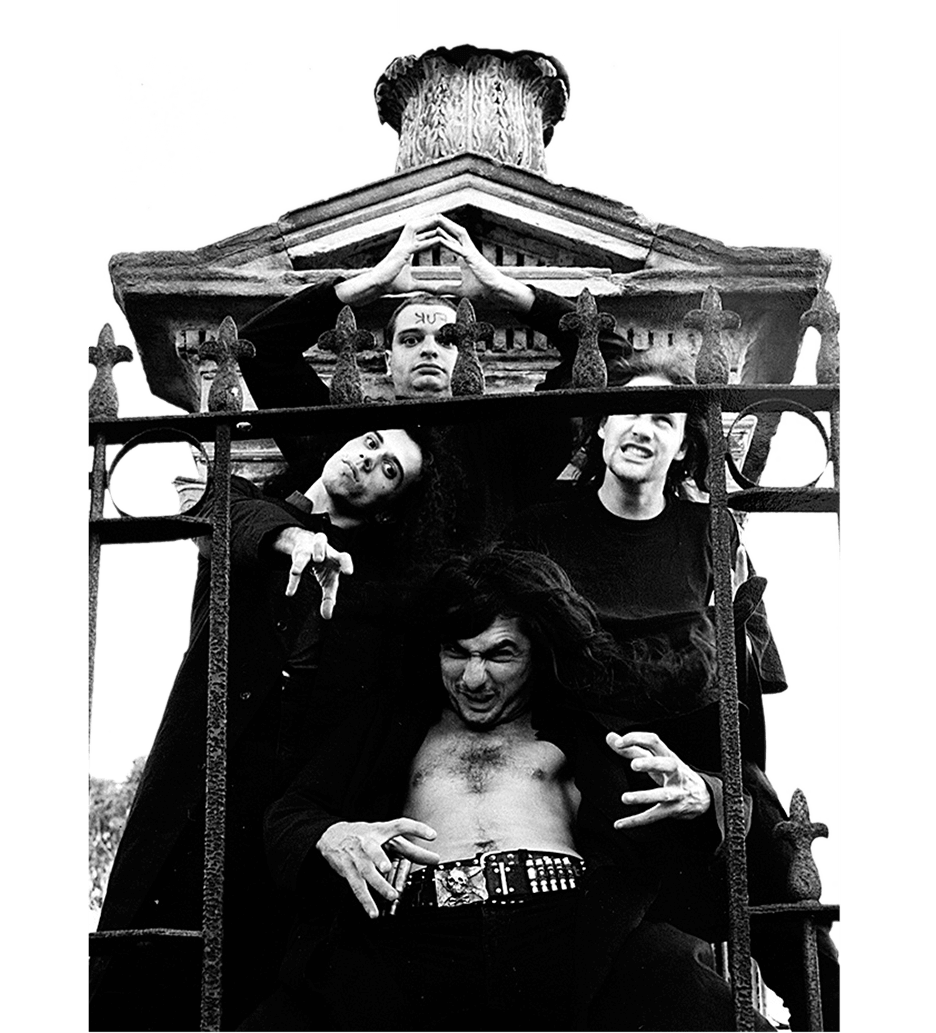
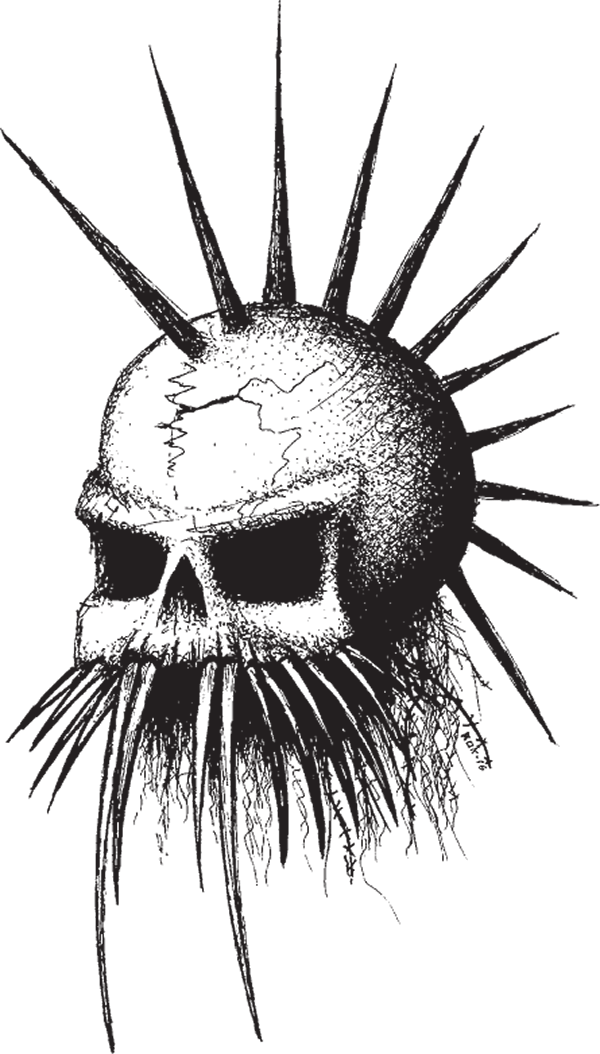
rok,
vocalist of australian
underground metal legends sadistik exekution, gives
a retrospective analysis of the band’s turbulent history. he explains why they
never became a commercial success, and how that is in fact a good thing for everyone involved
– We are mental metal, says Rok, or in fact punk – our attitude was always closer to the sex pistols than darkthrone.
The band’s official Facebook page has featured a few posts lamenting the death metal categorisation, which I suppose is fair enough if their preference is to be labelled something else. What gets confusing is their 2010 multi-album box-set named “Death Metal”; I’m assuming this is more sadistik exekution sarcasm that goes well over my head.
– Ah, this can be a bit tricky but I’ll try to set the record straight. I drew that artwork in earlier times, before we decided to distance ourselves. Back in the mid-eighties when we formed the band, most of us here in Australia and particularly Sydney simply referred to the likes of hellhammer as death metal. [...]
Black metal was reserved for mercyful fate and the likes, bands with a straight-out satanic image.
– venom, sure – black metal to some, though I called ‘em death metal as I did with celtic frost, sodom and bathory. We also thought of what we were doing with sadistik exekution as death metal.
As various American and European bands started sounding a bit different and the genres grew and expanded, so did sadistik exekution’s reluctance to be associated with any of them.
– We particularly despised being called black metal, which by then had starting deteriorating into a softer, feminine, gothic and ... ‘nice’ sound. By the mid-nineties, many of them sounded nothing at all like the older bands – yet we kept being lumped into that stupid fucking category. [...]


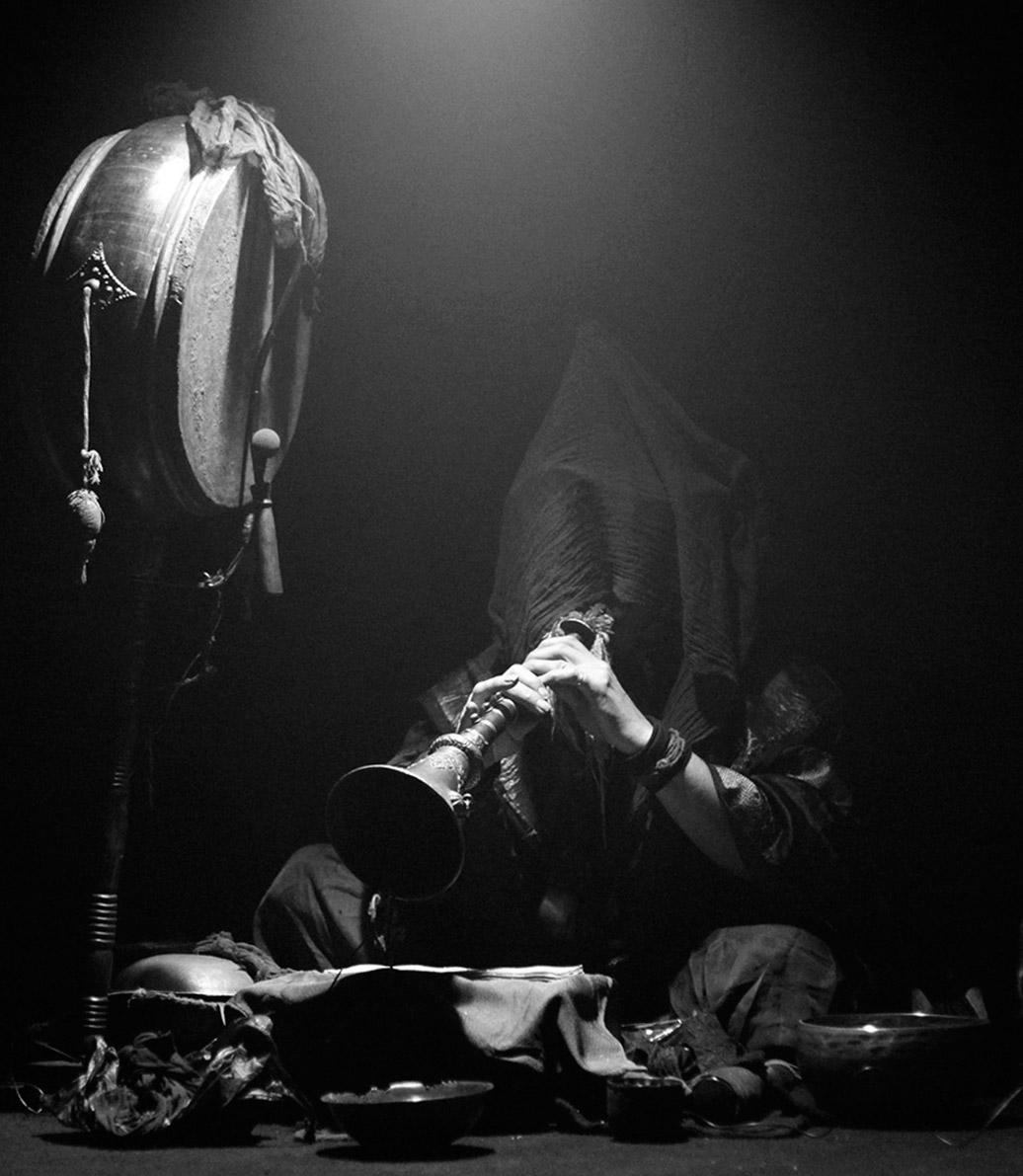
phurpa is a roving monastic choir that espouses a rogue form of bön, the shamanistic spirituality of pre-buddhist tibet. having been curious about this russian ensemble for some time i was dismayed at the scant information available online so when a march 2016 stockholm performance was announced i decided that in the absence of answers, i might as well do the asking. the ensuing tale is a captivating journey shrouded in himalayan mysticism; from the shadow of the kremlin to the pyramids of egypt and further on into the vast emptiness beyond.
I had initially agreed with the promoter to do the interview in the afternoon, in order to have it over with and not lurking in the back of my mind during the show. While making my way to the venue I was informed that my appointment had been postponed until afterwards as Alexey Tegin, the orchestra’s founder and lead conductor, had announced that ‘questions will change during concert’. Upon arrival I found all three members sitting on the floor humming intonations into headset microphones – throat chanting. This is a discipline of overtone singing called rgyud-skad ('tantric voice') and is the principle foundation of phurpa’s soundscape; a form of vocal meditation that produces an otherworldly rumbling barely recognisable as human. A range of traditional Tibetan instruments accompany the incantations; drums, cymbals, horns, shells and oboes – some featuring and even made from human and animal remains. Needless to say, this was a far cry from the type of sound-check I’m used to. While watching, the promoter from Stockholm’s Bored to Death Bookings mentioned that Alexey was adamant in his demands of a ‘strong sound’ on stage, proclaiming himself ‘not interested in playing music, it’s all about power’. At first glance Tegin looks a bit like a younger and bulkier version of The Emperor in the original Star Wars trilogy, had the latter embarked on a career in sidewalk pugilism instead of intergalactic domination. Before I had a chance to speak to him I overheard a conversation with a confused venue employee, the latter ensuring she’d understood him correctly – no lunch, no dinner. Alexey confirmed and informed her that his primary diet consists of raw meat. [...]


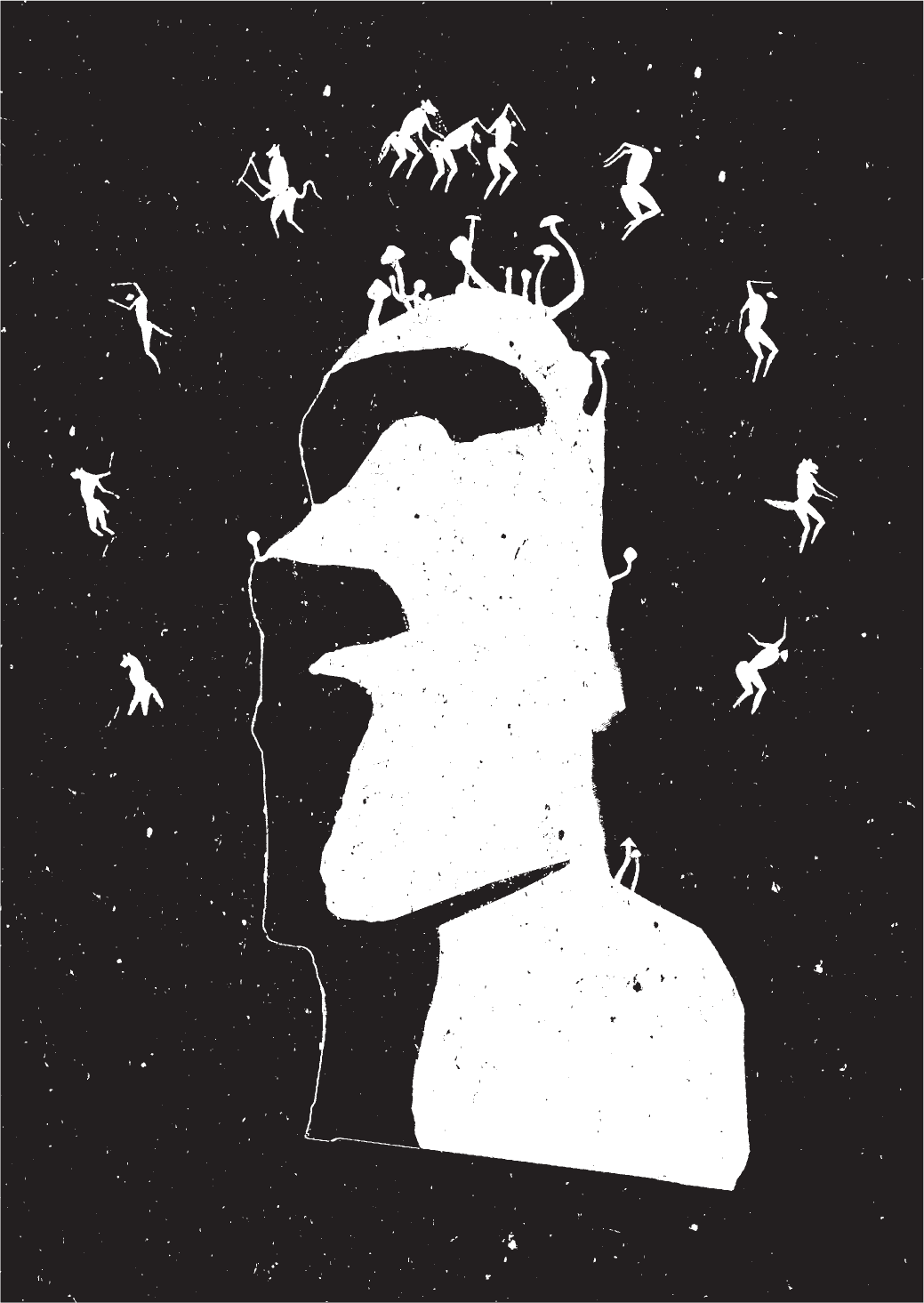
for thirty years, graham
hancock has sought to answer unspoken
questions about historical mysteries.
ancient markings on cave walls led him into jungle
darkness, where the vine of the soul gave him
clues that could solve the riddle of
human consciousness.
Graham Hancock is a British journalist and the author of several major international bestsellers. His books have sold more than seven million copies worldwide and have been translated into thirty different languages. He’s had two major television series, Quest for the Lost Civilisation and Flooded Kingdoms of the Ice Age. Hancock’s latest book, Magicians of the Gods, was published in the autumn of 2015.
– My first investigation into an ancient mystery was The Sign and The Seal, says Graham Hancock, which I began to research seriously in 1987 and finally published in 1992. I immediately set to work on my next book.
Fingerprints of the Gods: The Evidence of Earth’s Lost Civilisation was published in 1995 and is estimated to have surpassed three million copies in sales. The book argues that a previously unknown but highly advanced civilisation existed in prehistory, one whose imprints can be traced through ancient myths and megalithic structures. Additional bestsellers exploring the same hypothesis followed, with The Message of the Sphinx in 1996 and Heaven’s Mirror in 1998. [...]


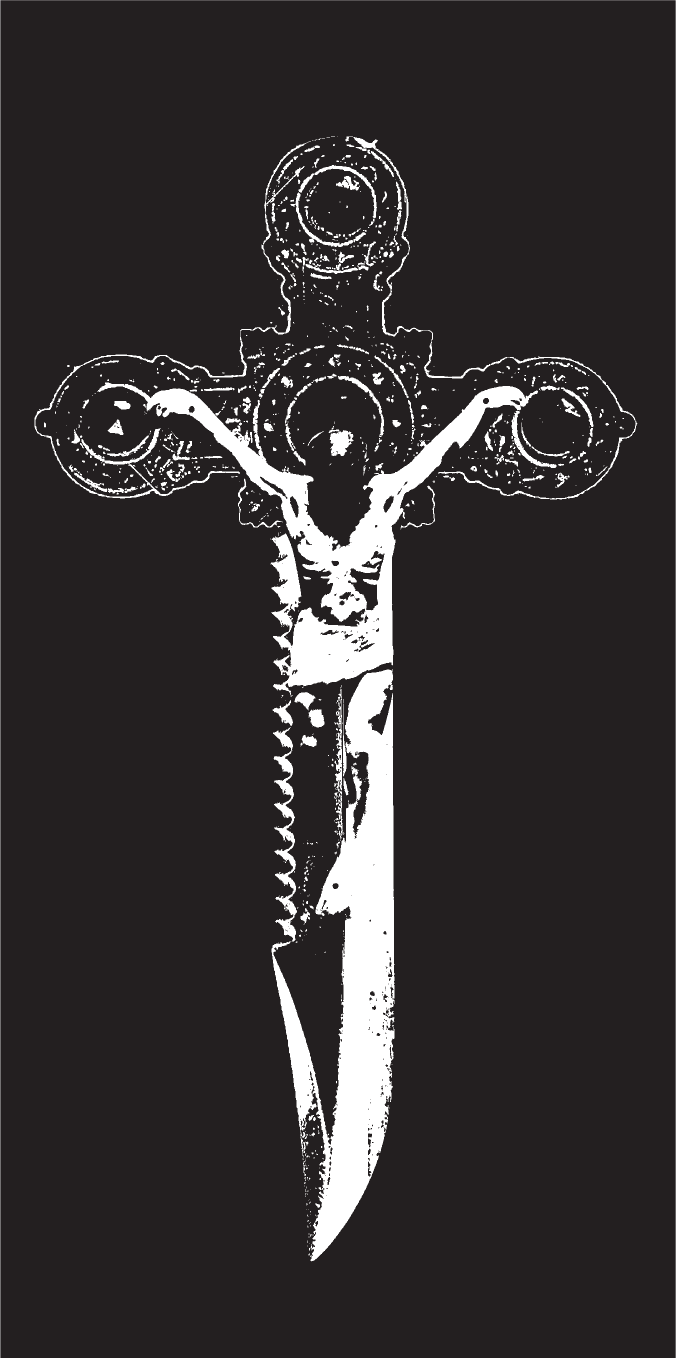
Truly understanding the french black metal fury that is antaeus means learning what’s fuelled it. through parted flesh, mental scars and wanning health – from misfortune and adversity that would have broken lesser men, comes "condemnation".
Vocalist MkM and guitar player Set have historically been the foundation of antaeus. Today, they are the only members.
– After a few years you realise that working as a full band is just fucking annoying, says MkM, we’d rather not have to get approval from anyone else to do what we want. It’s a simple arrangement; Set makes the music, we then talk about it and I do the rest.
antaeus have previously stated that there will be no new releases until it rivals the intensity of “Blood Libels” from 2006.
– “Condemnation” has eight tracks and the music is even more brutal than the last album. Set’s riffs sound like anger captured in distortion, so they are the perfect channel for my voice.
A session drummer was recruited for the album; Menthor, from nightbringer and lvcifyre.
– He did a great job, especially considering that he was given no freedom to play the way he initially proposed. Set was very detailed in his instructions for the drum patterns. [...]



Dr. schitz, bassist for swedish proto-black/death legends morbid, shares his journey through western magic and terrifying voodoo ritual, into the reality-cleaving eastern arcana. we learn why the greatest rewards lie in existential terror, and how death can rule us in life.
– I don’t really do interviews, says Dr. Schitz, there’s been a grand total of three in the past thirty years. The first was back in the day, Dead and I answered one from Slayer Mag. Then I did another for the same publication's final issue. Finally I gave my third for the Blod Eld Död book, after turning them down for two years. I changed my mind because Pelle’s brother was fully behind the project and I wanted to support him, so it seemed like the right thing to do.
Pelle ‘Dead’ Ohlin was the vocalist of morbid and then mayhem, who would later end up taking his own life. The aforementioned book was originally published in Swedish, but is currently being translated to English for release in early 2018. Dr. Schitz mentions that he agreed to speak to Bardo Methodology as a result of our previous conversation that ended up in the No Fashion article, with which he was pleased.
– I appreciate being able to speak more broadly and not having it end up as a two-paragraph blurb. That said, I’m a rather shy person and generally not comfortable doing interviews about morbid and Pelle. On the other hand, life is short and I’ve reached an age where you can no longer take anything for granted. Death approaches, so why hold anything back? [...]

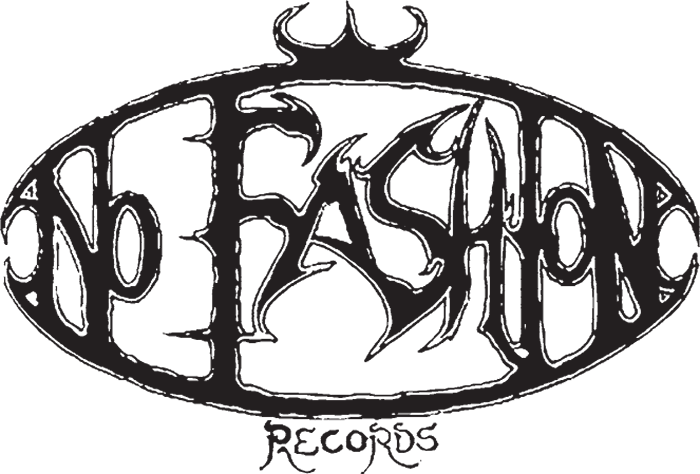
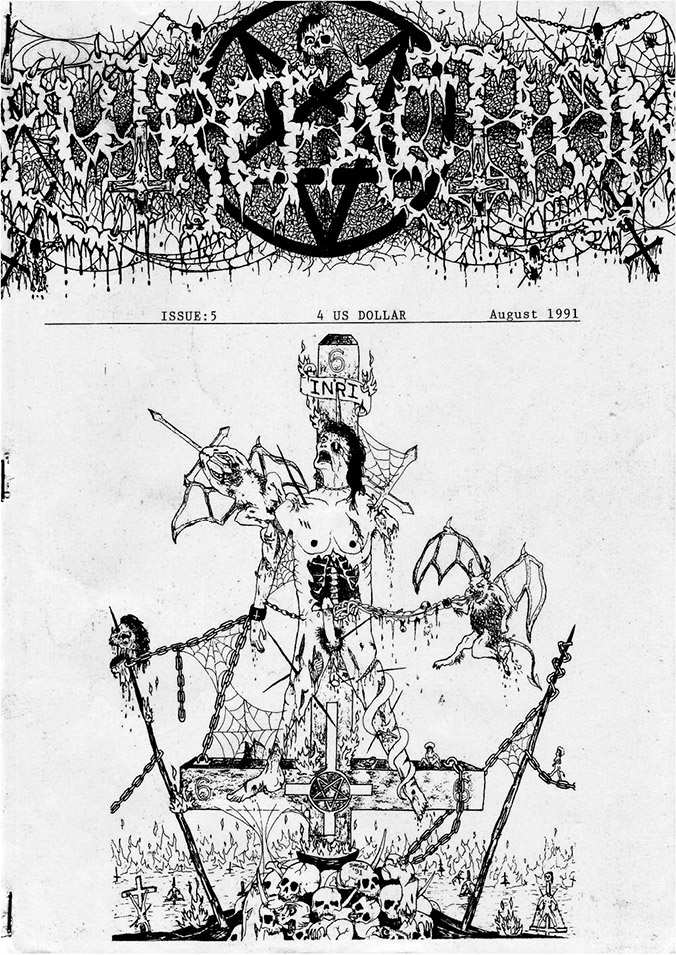
The architect behind two structural foundations of the swedish metal underground shares his story – one burdened by death and deceit, serving as a reminder of the fickle nature of life and how everything can be swept away by the stroke of a hand.
– The seeds were sown in 1988, says Tomas Nyqvist, I was fourteen years old and lived in a small town with nothing to do. I’m useless as a musician but really wanted to do something and take an active part in the underground.
Like most of his peers, he’d stay up to date by reading the contemporary publications that would prove essential for the emerging scene.
– Especially Morbid Mag and Slayer Mag. They were my inspiration to start one of my own.
Fuelled by a rabid, obsessive hunger for everything related to obscure metal, Tomas founded Putrefaction Magazine.
– I was one of these kids that didn’t really attend school all that much. When they found out I was doing a ’zine, I was put in one of these adjusted study programmes where I could work on it during school hours. They also offered to cover the printing expenses.
Considering the time – with w.a.s.p. being proclaimed a national emergency on state television, it’s quite ironic that Swedish tax payer money would be funding the growth of a now world-renowned death metal underground. The fledgling entrepreneur’s first course of action was to send questions to some of his favourite Swedish bands – a few of those that responded were carnage, abhoth, and embalmed.


This is a tale of remarkable fervour and dedication. growing up under south american military dictatorship, adherence to the emerging metal scene meant accepting death as part of daily life. from guerrilla warfare in urban settings, to remote rainforests seeking shamanic knowledge; a path of scars where journey’s end meant leaving everything behind.
Presenting Alvaro Lillo; a Chilean national who today resides in Germany, primarily known as live bassist for watain, he also plays in undercroft and xalpen. We begin this tale in the early eighties, when a neighbour unwittingly laid the groundwork for an obsession that would come to rule his life up until this day.
– He played rock bands in his house and I’d listen from my garden, stuff like deep purple, pink floyd; black sabbath and rainbow. Then I met some older guys who introduced me to iron maiden, venom, metallica and slayer. ‘This is heavy’, they said, ‘it is the shit’. I was also shown the other side of rock – the fast thing with dark lyrics. That’s where I’ve remained ever since, and I don’t regret a single moment.
In these days, Chile was ruled by a military dictatorship with despot Augusto Pinochet at the helm. The educational system enforced school uniforms and mandatory short-cropped hair.
– Military scum as head teachers when they hadn’t even finished school themselves. As a child, you had to follow the rules even if you hated them – it was normal in this war state. You knew that if you didn’t obey, you’d get a bullet in your fucking head. And when you are kid, you don’t want a bullet in your head.
Alvaro says that he believes his generation of satanic metalheads, the second one, to have been the wildest. His predecessors were three or four years older than him.
– When they saw me – an idiot child, they didn’t say ‘fuck off kid, you asshole’ like today. Instead, they gave me tapes to listen to. I’d see someone on the street and say: Cool patch! Back then, not knowing was nothing to be ashamed of, so he’d explain what band it was. ‘Go on and check it out’.
The emerging metal scene would congregate in the mountains, drinking around bonfires.[...]



A personal conversation with outspoken underground stalwart ryan förster. we learn about the secrets of ross bay cemetery, the history of war metal pilgrims conqueror, and his initiation into the proud canadian tradition of black metal skinheads.
– “Extermination Mass” is my vision of black metal, says Ryan Förster, the apex of all understanding gathered since first setting out on this path as a young man. death worship is my latest manifestation in the league of bands affiliated with the eternal Ross Bay Cult.
More about the madness of the graves later. death worship’s new EP, “Extermination Mass”, is the culmination of an arduous three year-long process.
– There were quite a few delays along the road from rehearsal to recording. First and foremost, I was swallowed by the trap set forth by Western civilisation – forced to prioritise food on the table and paying bills over private life. The ‘work life balance’ has become much more dif cult to maintain during this generation, as we all know. It seems as if we’re increasingly forced to sacrifice our so-called ‘free time’ to maintain a comfortable lifestyle
It could be argued that Förster’s most important contribution to extreme metal is the pioneering war metal monstrosity conqueror. The band’s only other member was demon drummer James Read – now known from revenge, and seeing as he’s also part of this new project it begs the question why a new moniker was required in the first place.
– conqueror was James and I putting our minds together, working out all concepts and music with each other. So despite the presence of both members, death worship is not constructed in the same way; this is my vision. The message remains the same – nothing has changed in that regard, but I prefer restarting with a clean slate. I’m all about the present; not the past, and not the future. [...]


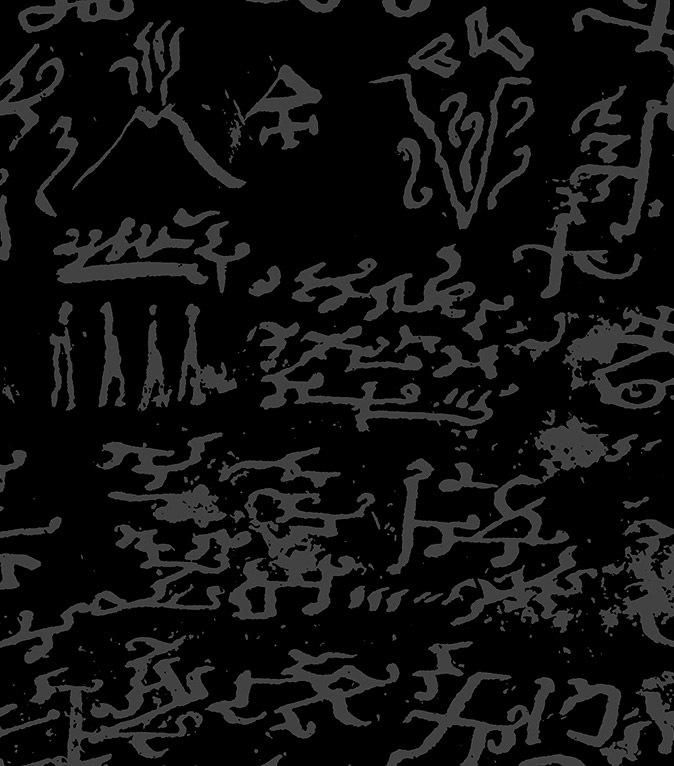
Spanish death/black metal monstrosity teitanblood prefer to operate in obscurity. In a rare cessation of silence, frontman nsk explains how they found inspiration in piss-soaked scripture, in clerical madness, and from the final black void.
Teitanblood’s new EP, “Accursed Skin”, was released December 13, 2016. As is their tradition, and in stark contrast to marketing guidelines, they presented their latest output only once it was available.
– Indeed, says guitar player and vocalist nsk, we’re quite austere when it comes to statements. I don’t know what else would even makes sense to announce, besides new merch or an upcoming tour.
The EP gives a vinyl home to “Sanctified Dysecdysis”, a song previously only available on the 2012 “Woven Black Arteries” mini-CD. As for the new track, “Accursed Skin”, it is a nasty piece of work. Having now listened to them consecutively, there’s little doubt that this most recent filth was dug up from the same mound.
– Despite all the years between them, the same concepts integrate both compositions; the continuance of the vision we had when forming the band.
Starting out in 2003, teitanblood set out to draw death metal from black metal sources and vice versa.
– Our urge to create was fed by the minimalistic and obscure atmosphere of recordings such as “Satanic Blood” (von), “Angelcunt” (archgoat), “Drawing Down the Moon” (beherit) and “Joined in Darkness” (demoncy). On this foundation, additional albums were incorporated until everything had slithered together into the organism it is today.
Since their debut album, “Seven Chalices” from 2009, teitanblood’s music has been distributed by Norma Evangelium Diaboli. The French label is known for operating under a rather strict framework for the kind of artists they choose to work with, so I’m curious how this collaboration came to be.
– Contact was mediated by Dauthus Zine – we then met with NoEvDia to see how aligned we were in terms of standards, and took it from there. We are honoured and grateful to be part of this alliance, with them and The Ajna Offensive as benefactors. [...]


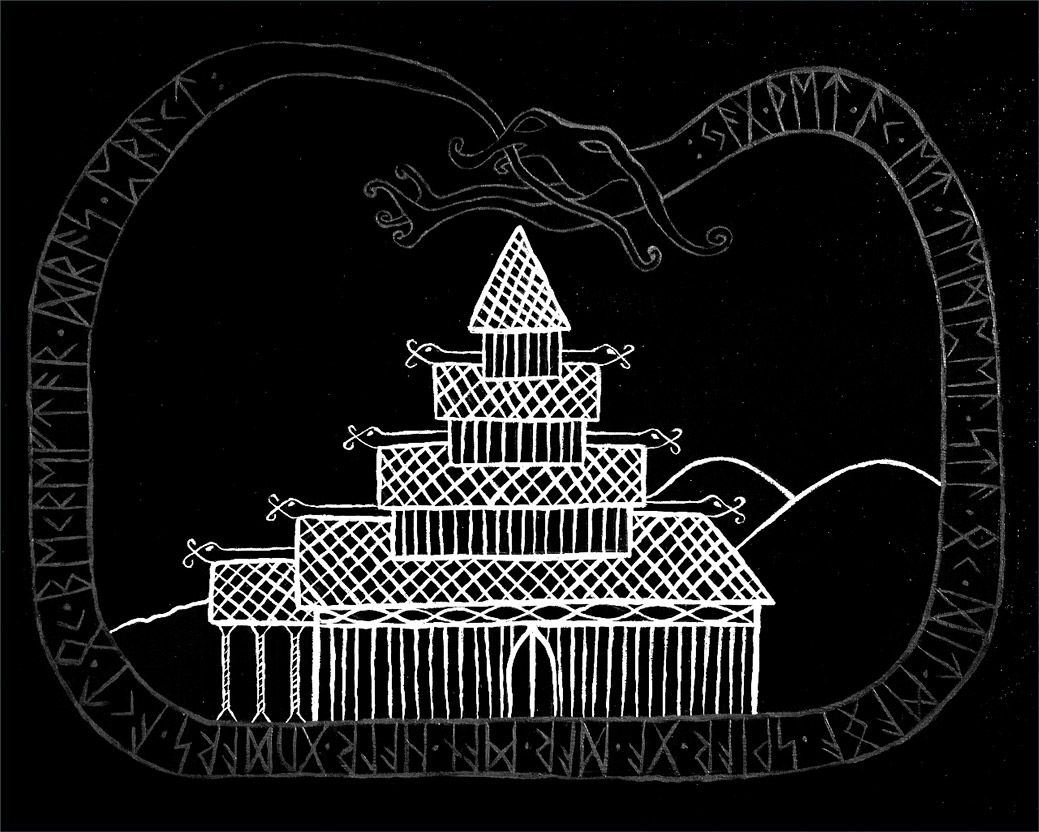
forndom is scandinavian folk art performed through a framework of ambient music. with fervour for norse spirituality and a foundation in academia, we hear about the gods and giants, of runes and men − and the importance of killing your self.
The seed that sprouted into forndom was first sown when amateur photographer Ludvig Swärd stumbled upon a Tumblr profile that combined music and photography. Since he was already operating a popular photo page on the same platform, he decided to try a similar approach by creating his own compositions.
– The result was later released as the “Flykt” EP, says Ludvig. At the time, this wasn’t really meant as much more than a background soundtrack for my images. The turning point came in November 2012, when I saw Swedish dark ambient artist Draugurinn perform live.
It was then Ludvig realised that he wanted to compose ambient music heavily permeated by Nordic folk traditions. Coming from a family of musicians, and having prior training in traditional instruments, he went on to do exactly that.
– “Flykt” was released for free on YouTube and Spotify in November 2013, and grew more popular than I could ever have imagined. The early material isn’t really representative of forndom though, which became a serious project with the debut album “Dauðra Dura” (2016).
That’s why “För världarna nio” is the only EP opus he performs live. The song in question is the first track on “Flykt”, whereas the album begins with “Nio nätters led”. Both titles contain a reference to the number nine, which I rst assumed to be an intentional arrangement.
– No, he says somewhat surprised, it’s not. I hadn’t even thought about it. The number nine is sacred in Norse mythology, it can be found everywhere. We have the nine worlds, Oden hung from the world-tree for nine days and nights, and equally long was Hermod’s ride into Hel.
The sacrificial blot fires burned with nine kinds of wood; there are nine great lindworms, and only nine gods survive Ragnarok. The mysterious valknut symbol consists of three interlocking triangles that together form nine points. [...]


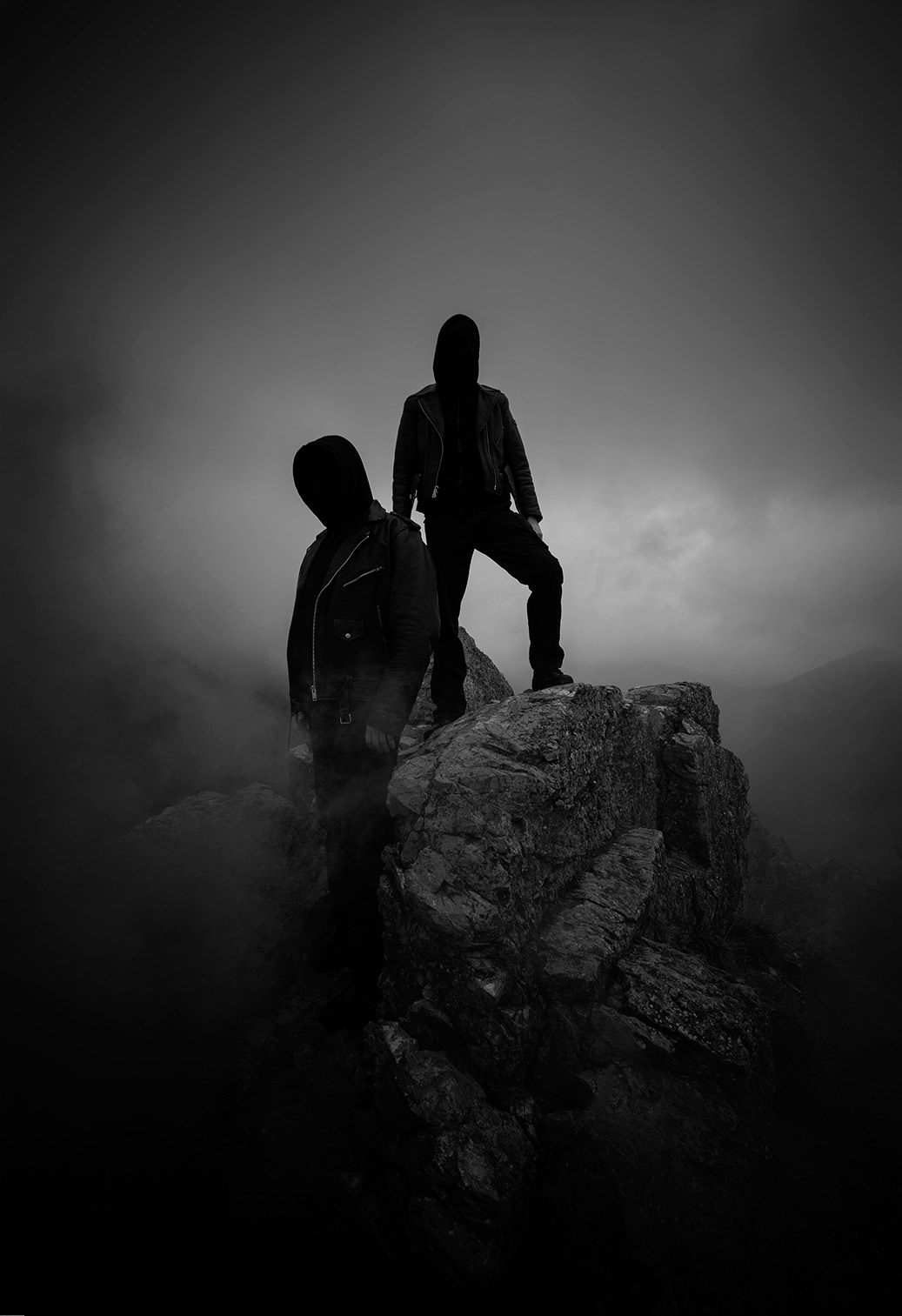
m, the faceless artist of poland’s Mgła, explains why he wants all focus on the art itself − and how a cynical nihilist justifies taking the stage to preach to the masses a belief in nothing.
From its inception in 2002, kriegsmaschine had been the duo’s main band – with mgła functioning as an occasional studio project. This arrangement lasted until 2012, when the mists absorbed the war wagon and the latter was reserved for recording activity while the former brought to the stage.
– Due to typical life stuff happening, people moving and so on, regular rehearsals were no longer possible with kriegsmaschine so we were unable to keep playing live.
Instead of exchanging the line-up, the two of them decided to have a go at mgła with a full band setting. Having recruited live members ShellShocked on bass and guitarist Silencer from medico peste, they rehearsed for almost a full year before playing their first show.
– First year of live activity we played five shows, the year after it was nine shows, then sixteen and now it’s forty.
In our initial email exchange before meeting, M explained that the lack of interviews available is due to mgła best being experienced rather than studied. I find it strange how knowing more about the band would detract from the experience.
– mgła should be represented by what we do in the studio and on stage, at least in the context of core ideas. The band communicates in a much more focused and compressed way than I ever could, talking like this over a coffee – it takes hundreds if not thousands of hours to complete what you ultimately hear on a CD. mgła is a distilled form of our innermost thoughts and comments.
There is an additional reason why M feels he’d rather let the band represent itself.
– I’m not really a particularly interesting person – the compelling stuff is my music, not my self. I’m just a guy.
The desire for inhuman representation is mirrored by their stage attire, which is tailored to shift focus from the musicians to their music.
– We wear hoodies and leather jackets, effectively making us indistinguishable from ninety percent of the audience – the only difference is that our faces are draped. We seek uniformity to remove the ego of our person, leaving nothing but a vessel – a tool. On stage we’re not individuals, we are a unit.
M’s lyrics aren’t written in the genre-typical short bursts of attempted infernal poetry, they look more like a flowing social commentary divided up into paragraphs rather than verses.
– Linguistically, they’re not yet at the level I’d like them to be but I’m trying to accomplish something that can stand on its own merit and makes sense even without sound. They’re not simply complimentary rhythmic structures for the instruments; they are of equal value as the musical content so I dedicate significant time to them.




Oregon-based label and publishing house ajna was named as a charge to action. its founder speaks of celebrations of nature and silent contemplation, and how he was led by death through the doors of perception, drunk from the nectar of the devil’s berries.
– What would become known as The Ajna Offensive was founded in 1992, says its proprietor Tyler Davis, when I met this man who had a musical project called plecid.
Enter Stephen O’Malley – mostly known for his work with the roving reverberation that is sunno))). Tyler and Stephen would later collaborate on one of the finest publications in underground metal – Descent Magazine. In 1999, after publishing five issues and having interviewed just about every band deemed relevant, they put it to rest.
– I’d released a bit of music under a different moniker in previous years and felt as if it might be a good time to go back at it – start again with a new name and fresh approach, as it were. At that point, there were no real logistical or conceptual guidelines in place.
What did you have in mind when you came up with the name?
– Ajna is the third eye, the chakra located between your two visible eyes. Ajna also means ‘command’, and I found the idea of this word meaning something militaristic quite appealing. The offensive in combination with this speaks to the active, assuming-command sort-of-approach that I’d like to think I apply to daily life.
The concept also symbolises intuition and clarity of vision, areas he believes houses room for improvement. [...]


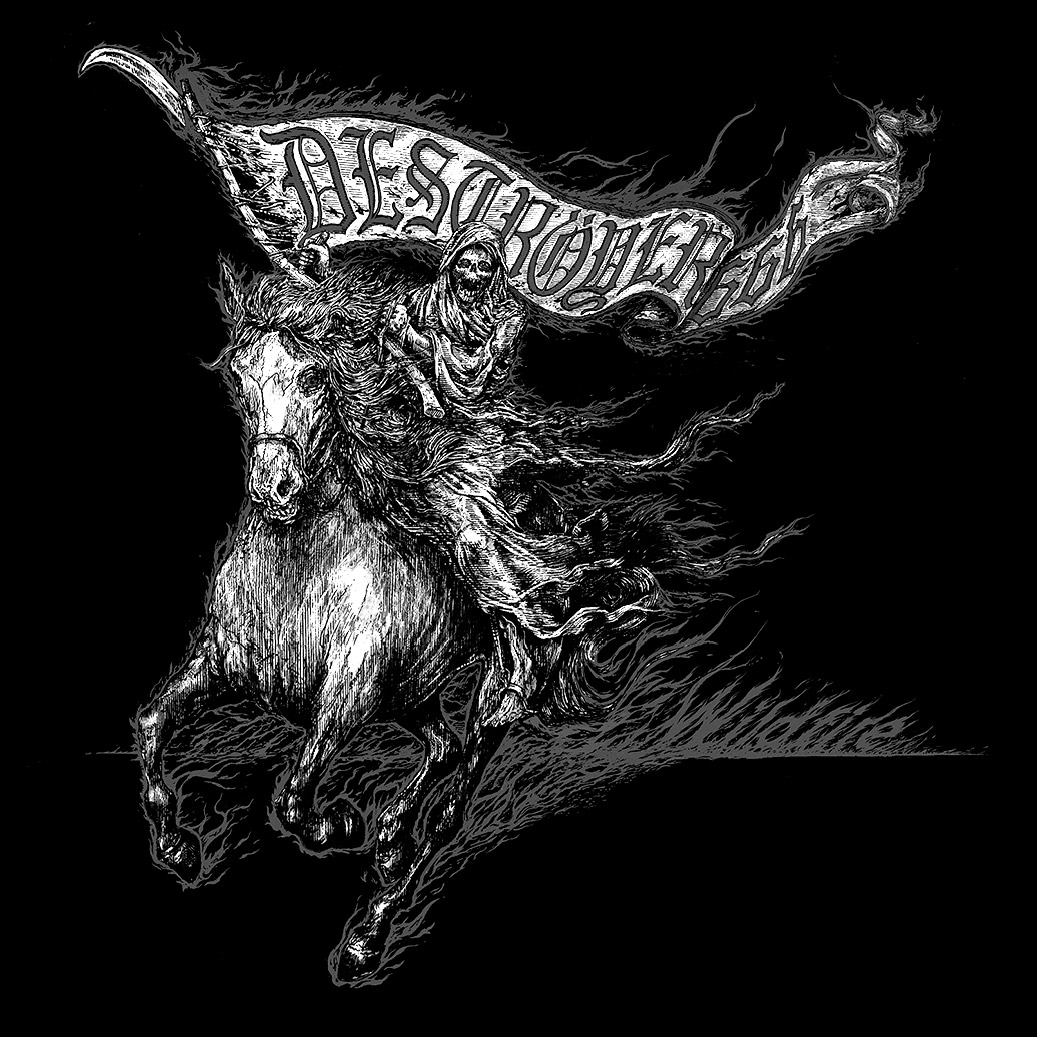
nowadays one can’t really specify where they’re from or what style of metal they play. what’s indisputable is deströyer 666’s return, heralded by new album “wildfire”. i catch up with founding member, guitar player and vocalist kk warslut – a roaming australian nomad currently dwelling in london. he gives a candid account of his journey from harsh beginnings in a desolate town to an lsd-induced descent into rat-infested darkness where being hunted as prey gifted him total predatory awareness. how he went from utterly drained of creativity to attaining divine inspiration while alone in the night, conducting a dirge for a deceased friend.
– Shrapnel leaving was the deciding moment, says KK. I spent a few months in a stupor but then decided that not writing an album I liked would be disrespectful to both of us.
In 2012, the guitar player of sixteen years left deströyer 666 in order to move back home to Australia. Instead of resignation, this turned out to be the jackboot up his procrastinated posterior KK needed to start composing again – the result being “Wildfire”.
– It was both old and new ideas. Some that didn’t get the push they needed in the “Defiance” (2009) writing sessions but mainly new ones. The new boys also added bits and pieces, the album wouldn’t be exactly what it is without them. The newcomers are Swedish drummer Perra (nominon, in aeternum), UK guitarist Ro (grave miasma) and Chilean bass player Felipe (procession, nifelheim).
– Okoi of bölzer also lent a hand and Laurent from chapel of disease played some solos, each adding their own paw prints. Seven years have passed since “Defiance”, an album on which the music was entirely written by Shrapnel and ex-bass player Matt Razor (razor of occam). After “Cold Steel... for an Iron Age” (2002), KK found that settling in the Netherlands had left his connection to the Muse completely severed.

Bardo Methodology #1
was printed in 1000 copies
on Munken Pure 100 g/m2 paper at Tallinna Raamatutrükikoda, Tallinn, in March 2017.
The first 500 copies are numbered and include a poster.
Skulls by F. Widigs
Skeleton by Rok